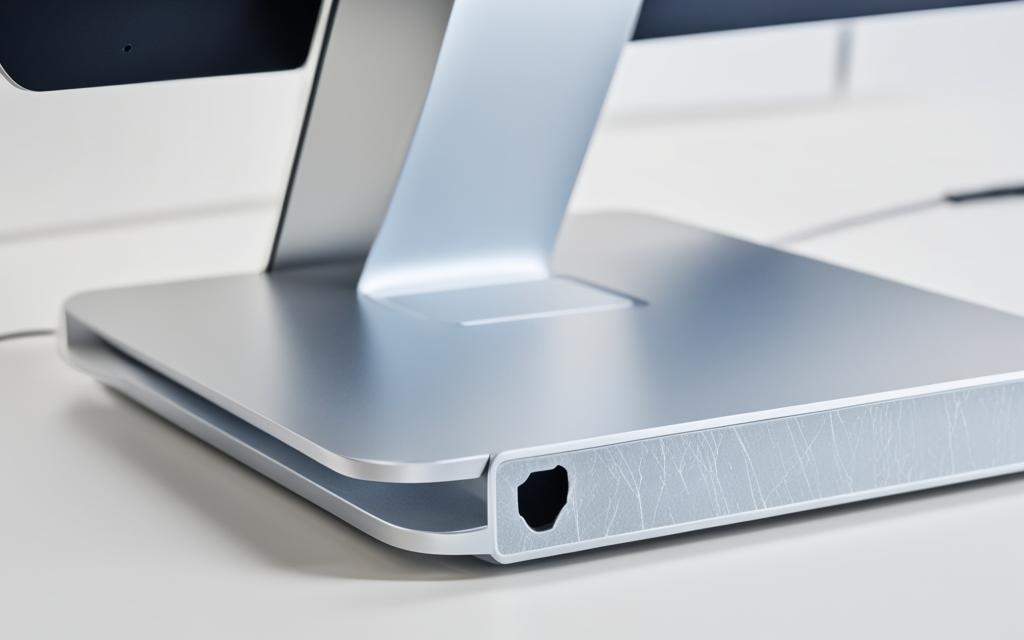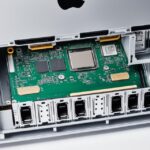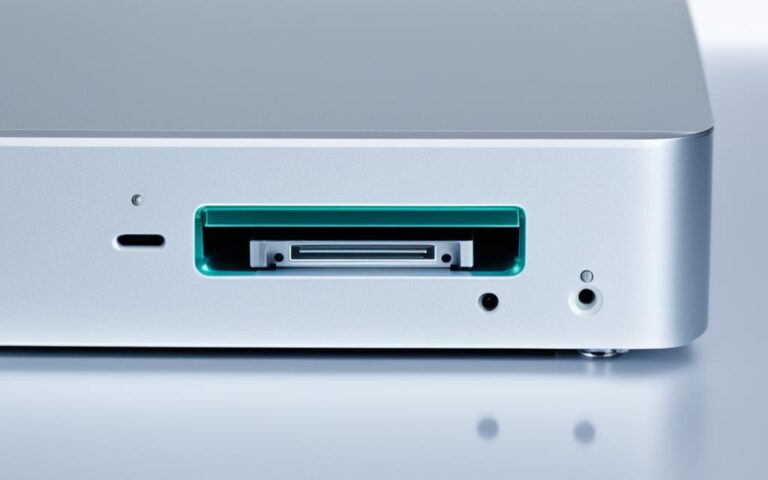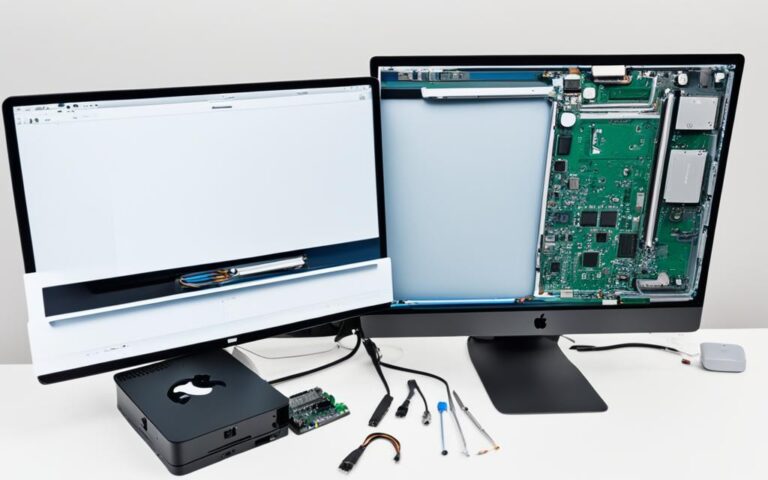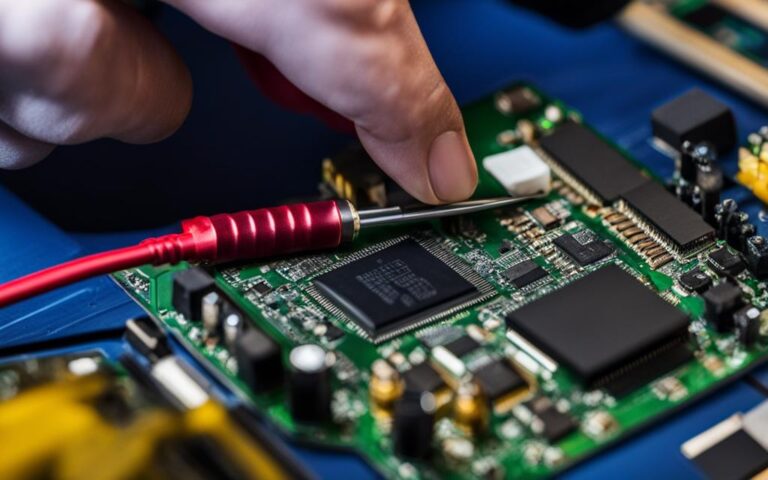How to Replace a Broken iMac Stand
If your iMac stand is experiencing issues or is not providing the stability you expect, it may require some attention. In this section, we’ll guide you through steps to troubleshoot and potentially fix common iMac stand problems, ensuring your computer remains securely positioned.
Assessment and Diagnosis
Start by carefully inspecting the iMac stand for visible issues. Check for loose or damaged components, bent parts, or loose screws. Ensure that the iMac’s screen and base are properly aligned and that there are no obstructions or debris affecting stability.
Inspecting the iMac stand is an essential first step in troubleshooting any problems you may be experiencing. By visually examining the stand, you can identify potential issues that may be impacting its stability and functionality.
Loose screws are a common problem that can affect the stability of the iMac stand. Inspect the stand’s screws, paying close attention to those securing the stand to the iMac’s base and attaching the stand to the iMac’s display. If you find any screws that are not securely tightened, use a suitable screwdriver or Allen wrench to carefully tighten them, ensuring a stable connection.
Bent parts can also contribute to an unstable iMac stand. Carefully examine the stand’s components, such as the arms and hinges, for any signs of bending or misalignment. If you notice any bent or misshapen parts, you can attempt to gently straighten them, restoring the stand’s original shape and stability.
In addition to loose screws and bent parts, it’s also important to check for any obstructions or debris that may be affecting the iMac stand’s stability. Dust, dirt, and other particles can accumulate over time and interfere with the stand’s moving parts. Use compressed air or a soft brush to clean out any debris, ensuring smooth operation and optimal stability.
Taking the time to thoroughly assess and diagnose any issues with your iMac stand is crucial in determining the necessary steps for repair or replacement. By inspecting for loose screws, bent parts, and obstructions, you can address the specific problems at hand and ensure that your iMac remains securely positioned.
Tighten Loose Screws
If you notice any loose screws, use a suitable screwdriver or Allen wrench to carefully tighten them. Pay particular attention to the screws securing the stand to the iMac’s base and those attaching the stand to the iMac’s display. Be cautious not to overtighten, as this could potentially strip the screws or cause other issues.
Step-by-Step Guide:
- Start by locating the screws on the iMac stand. They are usually located at the base and the connection between the stand and the display.
- Use the appropriate screwdriver or Allen wrench to tighten the loose screws. Ensure that the tool fits properly, as using an incorrect size could damage the screw heads.
- Turn the screwdriver or wrench in a clockwise direction to tighten the screws. Apply gentle pressure and stop when you feel resistance. Avoid using excessive force, as this could cause the screws to strip or break.
- Repeat the process for all loose screws, ensuring that each one is securely tightened.
By tightening the loose screws, you can improve the stability of the iMac stand and prevent any potential issues in the future.
Remember, maintaining the stability of your iMac stand is crucial for the proper functioning of your computer. Periodically check and tighten the screws to ensure a secure and sturdy setup.
Check for Bent or Damaged Parts
When troubleshooting and fixing common iMac stand problems, it’s important to inspect the stand’s components for any signs of bending or damage. Identifying and addressing these issues promptly can ensure the stability and functionality of your iMac.
If you notice any bent or misshapen parts, it’s recommended to carefully attempt to straighten them. However, it’s crucial to exercise caution and be gentle when attempting to reshape any bent metal or plastic components. Applying excessive force could potentially lead to further damage and compromise the integrity of the stand.
By inspecting and addressing bent or damaged parts, you can maintain the structural integrity of your iMac stand and ensure its optimal performance for years to come.
Common iMac Stand Components
| Component | Description |
|---|---|
| Base | The bottom part of the iMac stand that provides support and stability. |
| Stand Arm | The vertical arm that connects the base to the display. |
| Hinge | The mechanism that allows the iMac display to tilt and adjust its position. |
| Mounting Plate | The metal or plastic plate that attaches the iMac stand to the back of the display. |
Inspecting these components for any signs of bending, warping, or damage is essential in ensuring the stability and functionality of your iMac stand. By addressing any issues promptly, you can prevent further damage and maintain the optimal performance of your iMac.
Clean and Remove Obstructions
To ensure optimal functionality of your iMac stand, it is important to keep it clean and free from any obstructions or debris that may hinder its operation. Over time, dust and dirt can accumulate, affecting the smooth movement of the stand and potentially compromising its stability. To mitigate these issues, follow these simple steps to clean and remove obstructions from your iMac stand.
Start by unplugging your iMac and placing it on a clean, flat surface. Inspect the stand for any visible dust, dirt, or foreign objects. Use a soft brush or cloth to gently remove any loose debris from the stand and its moving parts. Take extra care around sensitive areas to avoid causing damage.
If you notice stubborn debris or particles that are difficult to remove with a brush, compressed air can be used to blow them away. Point the nozzle of the compressed air canister towards the affected areas, applying short bursts of air to dislodge any remaining obstructions. Be sure to hold the canister upright and follow the manufacturer’s instructions for proper use.
Regularly cleaning your iMac stand and keeping it free from debris will not only ensure it remains in optimal condition but also contribute to a smooth and stable user experience. By taking the time to maintain your iMac stand, you can prolong its lifespan and continue enjoying the convenience and functionality it provides.
